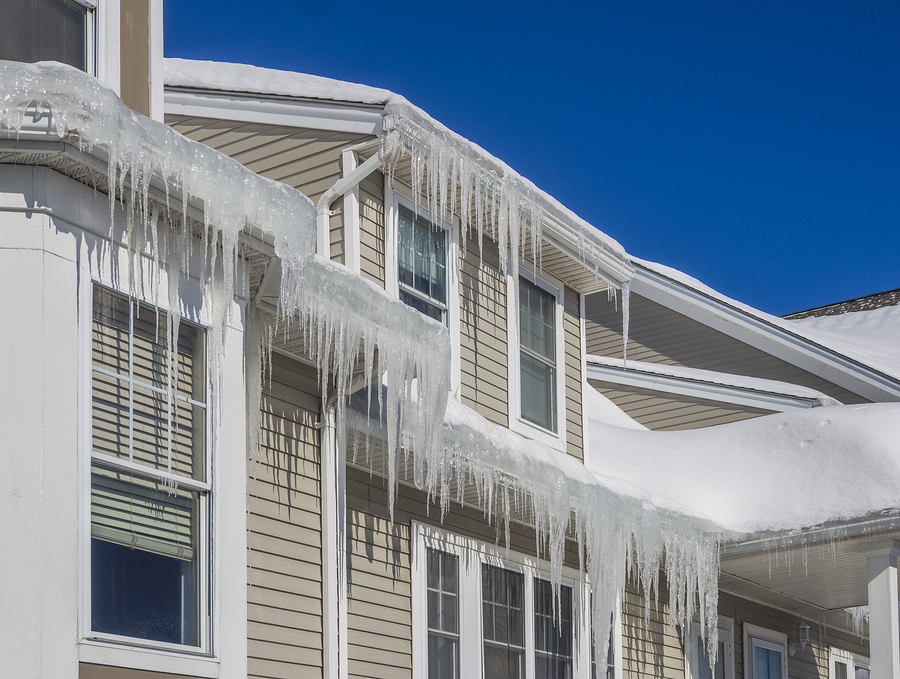
Clogged gutters and inadequate insulation can cause ice dams to form on the roof of your home.
Fall has come to New England. The leaves are turning, the air is crisp, and people are trading in their bathing suits and flip flops for sweaters and boots. Fall chores include raking leaves, clearing out the garden, and preparing your home for winter weather.
You may not feel ready yet, but the best time to prepare for winter weather is before it hits. Here are some ideas for how to get your home ready for the cold, snow and ice of winter that is just around the corner.
A Winterizing Checklist
–Clean the gutters. Leaves and other debris can collect in your gutters, leaving them clogged and unable to funnel rain and melting ice safely away from your home. Once the leaves have finished falling, making sure the gutters are clean and free from obstructions will prevent ice dams from causing problems for your home over the winter.
–Seal air leaks. By holding a candle or incense stick near windows, doors and other openings, you can see where there might be drafts where air is escaping or entering your home. Sealing those leaks with caulk, spackle or other materials will make sure your home keeps in as much heat as possible all winter. An added benefit: sealing air leaks will help reduce cooling costs in summer as well.
–Have furnace inspected and cleaned. Once a year, your furnace and any alternative sources of heating (wood stove, fireplace) should be cleaned and inspected to make sure it is working properly and safely. This is also a good time to replace the furnace filter and record the date so that you know when to replace it throughout the winter. A dirty furnace or even just a dirty filter can reduce your system’s efficiency 5 to 30%, costing you big bucks all through the winter.
–Drain Water Lines. If your cooling system has water lines, you should drain them before the temperatures go below freezing. Outdoor water spigots should also be shut off for winter. This is also a good time to insulate pipes that are near outside walls and prone to freezing when temperatures go into freefall.
–Prepare your windows. Late in fall, as even the daytime temperatures begin to feel nippy, you should install storm doors and windows, if you have them. Another way to save money on cooling costs is to install plastic film over your windows to seal out the cold. If you have sealed air leaks, you may not need to take this step, but older windows may have lost their seals (or never had any) and may need extra help.

–Install insulation in the attic. This step can be pricy, but may save you a lot of trouble later on and may increase the longevity of your roof. If you have had trouble with ice dams in the past, having insulation replaced or added to your attic will ensure that heat from your home doesn’t rise up to the roof and cause ice to melt, then refreeze. Ice dams can cause roof leaks and even foundation leaks if water streams down the walls of your house as the ice melts in spring.
–Reverse ceiling fans. Many ceiling fans have a reverse switch that changes their direction, causing them to push heated air down from the ceiling where it can be recirculated through the home, saving money on heating costs. This simple trick can save homeowners up to 10% on their heating costs if multiple fans are used.
Moonworks provides gutter cleaning, air sealing and insulation services as well as energy audits that can show where heat is escaping your home. Contact us online or call us at 1-800-975-6666 to schedule your free consultation.
